Trends in Summer Vacations for Office Workers: A Clear Preference for 'Short and Close'
"So when are you going on summer vacation?" This question, which anyone who works in an office has heard at least once, is resurfacing as a hot topic.
As we enter late July and early August, many office workers are planning their summer vacations or have already returned from them. What does this year’s vacation trend look like for office workers in the Republic of Korea?
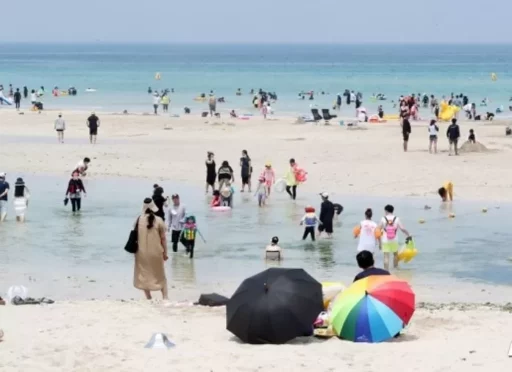
An internet security service company, Elimnet, conducted a survey on '2025 Summer Vacation Plans of Office Workers' from July 18th to 22nd, targeting a total of 1,000 office workers, including 613 men and 387 women nationwide.
The results revealed that this year's key trend for summer vacations is 'short and close.'
The core trend for summer vacations this year is 'short and close.'
There is a high preference for domestic travel, and many are planning short vacations of 3 to 4 days.
According to the survey, 88.9% of respondents reported that they are planning a summer vacation this year. The most popular vacation duration was '3 to 4 days' at 54.2%, followed by '5 to 7 days' at 26.4% and '1 to 2 days' at 14.2%.
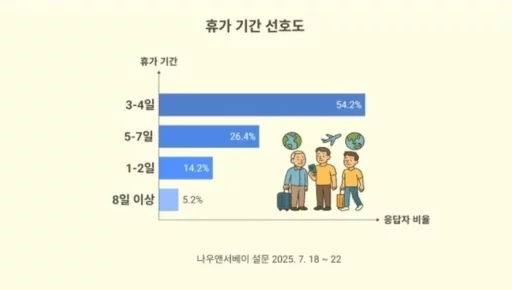
In contrast, long vacations of '8 days or more' accounted for only 5.2%. This indicates that office workers prefer shorter, more efficient schedules rather than lengthy breaks during the summer vacation season.
A notable difference was observed in the choice between domestic and international travel. Approximately 69.6% of respondents opted for domestic travel, indicating that about 7 out of 10 people plan to spend their vacation within the country.
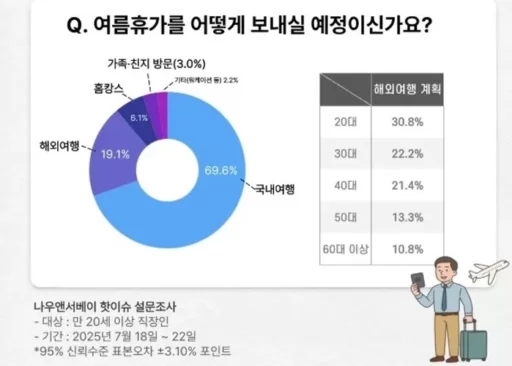
International travel accounted for 19.1%, while home vacations made up 6.1% and visits to family or friends constituted 3.0%. There were also minor preferences for workations (0.9%), digital detox (0.3%), and self-development (0.1%).
International travel was more popular among younger generations, with Japan and Southeast Asia being the top favorites.
Among respondents planning international travel, there were distinct differences by age group. Those in their 20s showed the highest preference for international travel at 30.8%, followed by those in their 30s at 22.2%, 40s at 21.4%, 50s at 13.3%, and those over 60 at 10.8%. The trend confirmed that younger individuals tend to prefer international travel more.
Japan emerged as the most popular destination for international travel at 34.7%, followed by Southeast Asia at 29.4%. Other destinations included China, Hong Kong, and Taiwan at 10.6%, North America at 7.1%, Western Europe at 5.9%, and Oceania at 5.3%, while there were no responses for Russia and Africa.
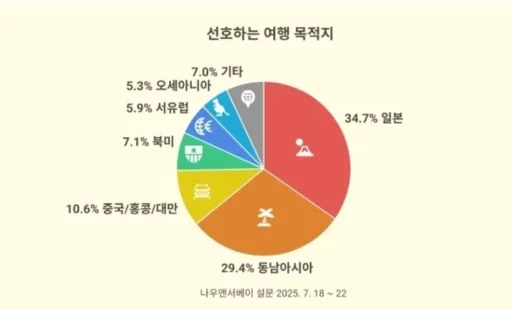
The biggest concern regarding international travel was 'safety' at 47.6%. Following that were the burdens of airfare and accommodation (38.8%), cost increases due to currency fluctuations (35.3%), concerns about flight accidents (30.6%), language communication issues (26.5%), and accessibility to medical services (18.2%).
These results suggest that the travel industry needs to focus more on ensuring a safe travel environment and developing cost-effective products.
Rest, healing, and stress relief are the main objectives of vacation.
The most valued aspect of summer vacations was rest and healing at 46.4%.
Nature and scenery (41.2%), food exploration (37.4%), and the comfort of accommodation (35.9%) followed, with experiences and activities, cost reduction at 10.0%, transportation convenience at 7.9%, and historical and cultural exploration at 7.7%.
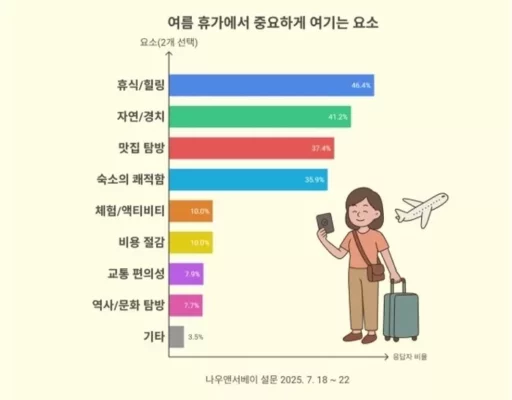
As for vacation companions, 54.0% of respondents indicated they would travel with family, while partners or spouses accounted for 26.4%, friends for 11.0%, and solo travelers for 7.5%.
The most desired outcome from summer vacations was the relief from everyday stress, which received an overwhelming 51.7%.
Time spent with family and friends (27.6%), new experiences and memories (14.7%), self-reflection (3.6%), and health recovery (2.0%) received relatively lower responses.
Reasons for not planning a vacation included avoiding congestion during the vacation period at 24.3%, lack of financial freedom at 23.4%, and not feeling the need for a summer vacation at 18.9%.
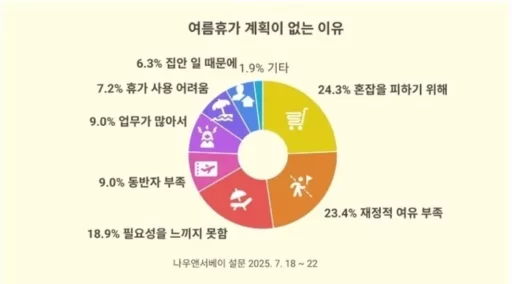
Other reasons included not having someone to go with (9.0%), heavy workload (9.0%), difficulty in taking vacation at work (7.2%), and household duties (6.3%).
A representative from Elimnet's Now & Survey stated, "This survey shows that summer vacations for office workers are not just simple leisure activities, but essential parts of life for stress relief and reconnection with family." They also noted, "While short domestic trips dominate, the trend shows that younger individuals are leaning more towards international travel, while older people clearly prefer domestic travel."
Additionally, "As safety and costs emerged as the biggest hurdles for international travel, the travel industry must focus on creating products with safety and cost efficiency," they added. This survey was conducted within a 95% confidence level, with a sampling error of ±3.10 percentage points.
Image source: Data images for better understanding of the article / News1, photo provided by Elimnet Now & Survey.


